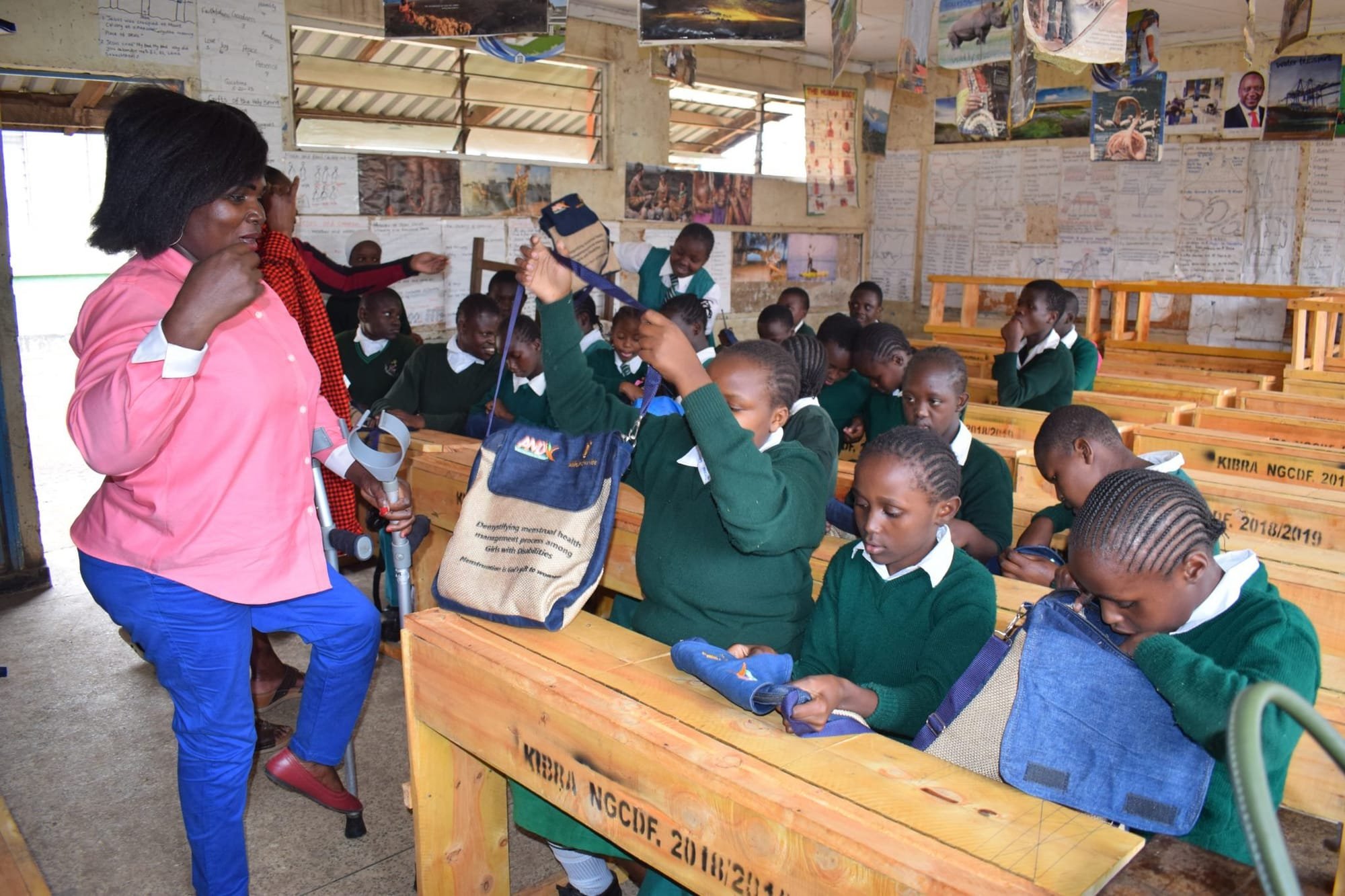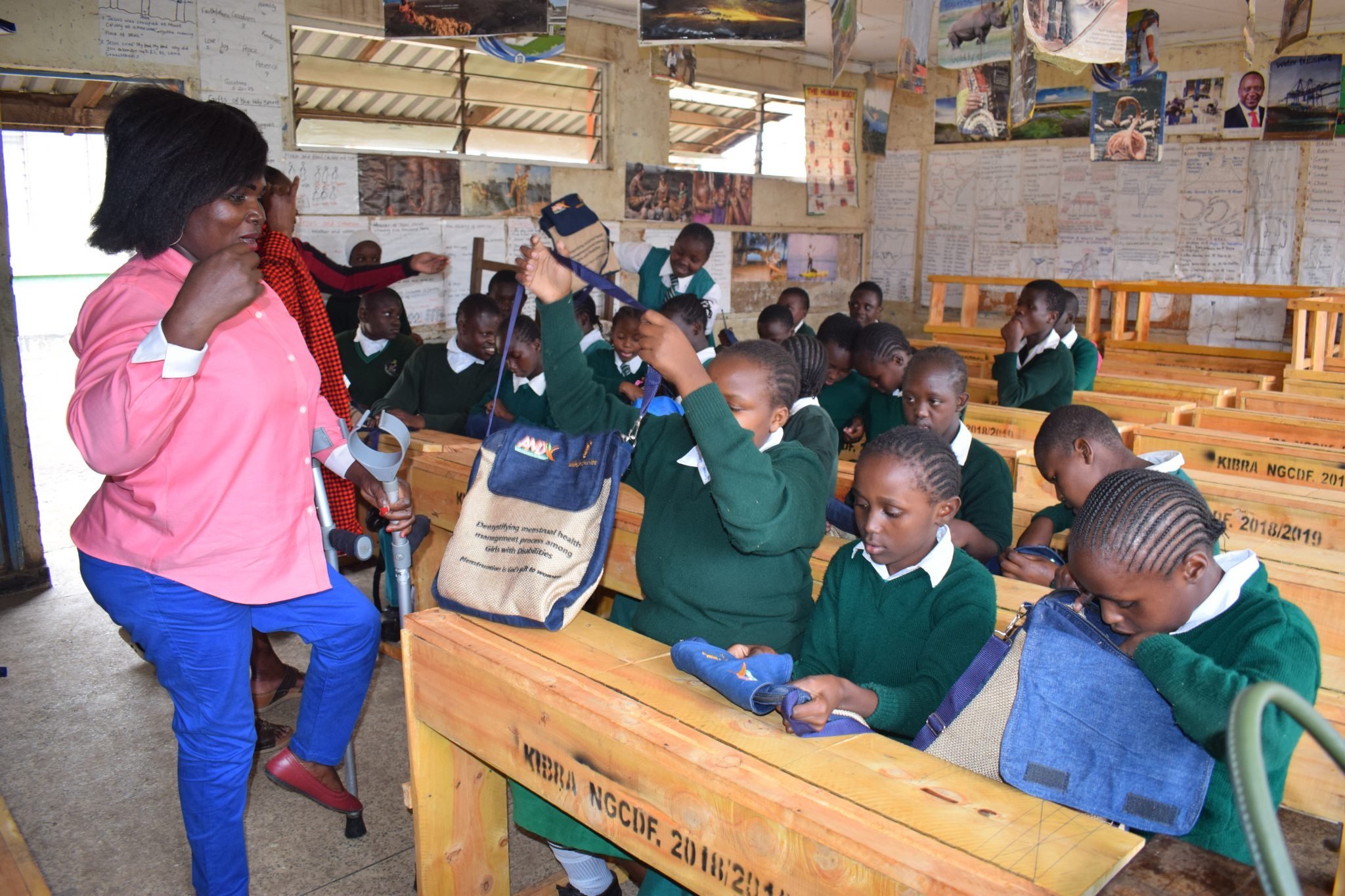ACCESS TO EDUCATION FOR PERSONS WITH DISABILITIES.

By William Lenjo
Education is a right entrenched in the Kenyan constitution as portrayed by Article 53(b) of the Kenya Constitution 2010. It guarantees the right to free and compulsory basic education for every child. Article 54 targets Persons with disabilities (PWDs) and states that they have a right to access educational institutions and facilities integrated into society to the extent compatible with their needs and interests.
According to the World Health Organization (WHO) 2006, persons with disabilities in Kenya make up 10% of the population, which are approximately 3.5 million people. This is a large number of people and they should be well represented across all spheres in the nation, from governance to business and education is the gateway to achieve this representation. The Ministry of education reported that the number of PWDs enrolled in schools was 22,000 in 2009 and rose to 26,885 in 2003 and 45,000 in 2008.
This compares poorly to their regular peers whose number stood at 8,563,821 in 2008. In July 2009, the Government of Kenya through the Ministry of Education launched a policy framework for special needs education. This set the ball rolling on several improvements that came about in the educational sector specifically targeting the PWD’s concerning their integration into the greater society especially on the education front. Efforts from Non-governmental Organizations can also not go unnoticed as they have greatly contributed to improving the quality of life for PWDs in the country.

Great strides have been made so far. The establishments of special needs centres in Public Schools in Kenya has played a great role in the integration and acceptance of children with special needs as they can now attend school with their peers without feeling as different because of their special needs, they sit in the same classes and participate in the same activities as the rest. However, more needs to be done to ensure the schools are equipped to make learning easy for special needs children and create a comfortable environment for them to learn and explore their creativity.
Initially, PWDs could only attend school in the special education centres designed for their needs and these centres were not as widespread throughout the republic, leaving a large number of children whose parents could not afford to take their children to these schools neglected. The cost of special needs education also very high creating a challenge due to poverty levels in the country. Most of these special schools were located in urban areas thus leaving out a large number of children in rural areas not catered for.
Curriculum development has also played a big role in ensuring that children with special needs can learn in a competitive environment as the rest. Through the Kenya Institute of Curriculum Development (KICD), special needs students are provided for with an expert tested curriculum to enable smooth learning and development of learners.
Several groups are also actively involved in trying to ease the burden the government tries to shoulder on its own, of improving infrastructure and challenges PWD’s face in education and daily lives. They donate, build and offer assistance to schools and special needs centres to ensure the special needs children also get equal opportunities to education as the rest.
In conclusion, although the Government is working hard, a lot more can be done to encourage education for PWDs in our society. More training and deployment of special needs teachers in public schools, creation of more special needs centres integrated into the public school system, improving the pay and remuneration of these teachers to encourage more youth to get into the profession and societal assistance through donations to improve learning, infrastructure and also education to end stigma associated with disabilities.